Cashmere scarves are luxurious fashion accessories famous for their unparalleled softness, warmth, and timeless elegance. Unquestionably, the most proficient artisans craft these scarves from the finest and most luxurious natural fibres in the world - cashmere wool. Renowned for their quality, versatility, and ability to elevate any outfit, cashmere scarves have, indeed, been a symbol of sophistication and comfort for centuries.
The Origin of Cashmere Wool
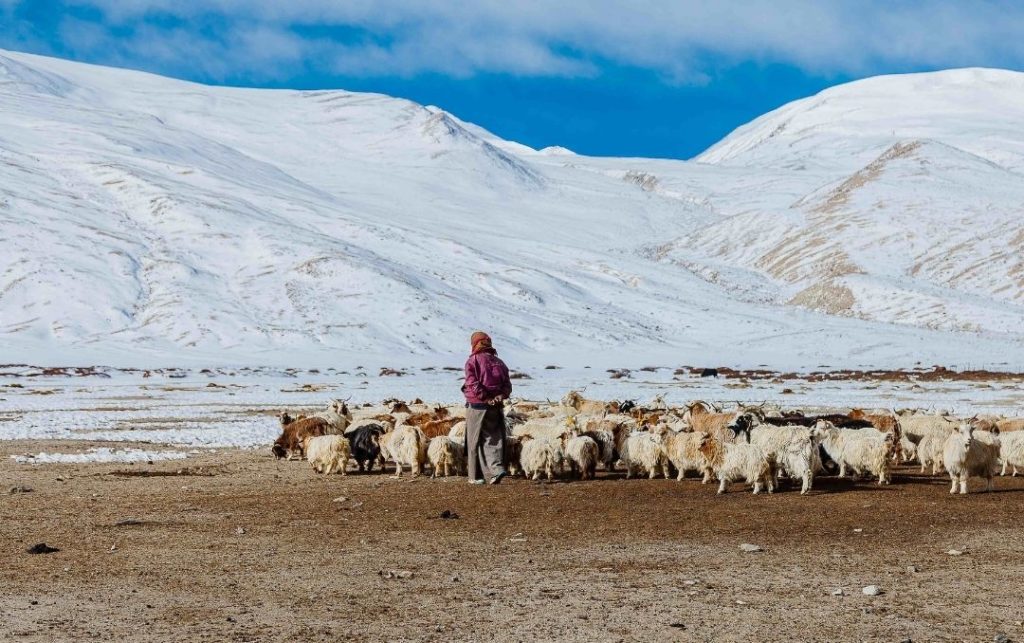
The story of cashmere scarves begins with the cashmere goat, also known as the Himalayan goat. These goats, native to the Himalayan region, have an extraordinary undercoat of fine, soft fibres. It is this undercoat that artisans painstakingly collected during the spring molting season, and these fibres are the source of the prized cashmere wool.
The wool grows on the underbelly of this goat and protects the animal from harsh winter cold. But in the Spring season, the same wool becomes unbearable and the goat gets rid of it by rubbing its body against coarse surfaces. The wool is partially lost and herders collect it. Later, artisans clean, sort, and then process it to craft luxury Pashmina shawls, scarves, and apparel.
Processing Cashmere Fibre
The processing of cashmere fibre is, indeed, a meticulous and essential step in transforming the raw material from the undercoat of cashmere goats into the luxurious and coveted cashmere wool used to create various products, including cashmere scarves. This process involves several stages, each crucial in preserving the softness, warmth, and quality of cashmere. Here is an overview of how artisans process cashmere fibre.
Sorting and Grading
Artisans sort the collected cashmere fibres are then grade these to separate the valuable undercoat from the coarser outer hair. They do this initial sorting by hand. Only the experienced workers examine the fibres, feeling for softness and fineness, and remove any impurities.
Washing the fibre
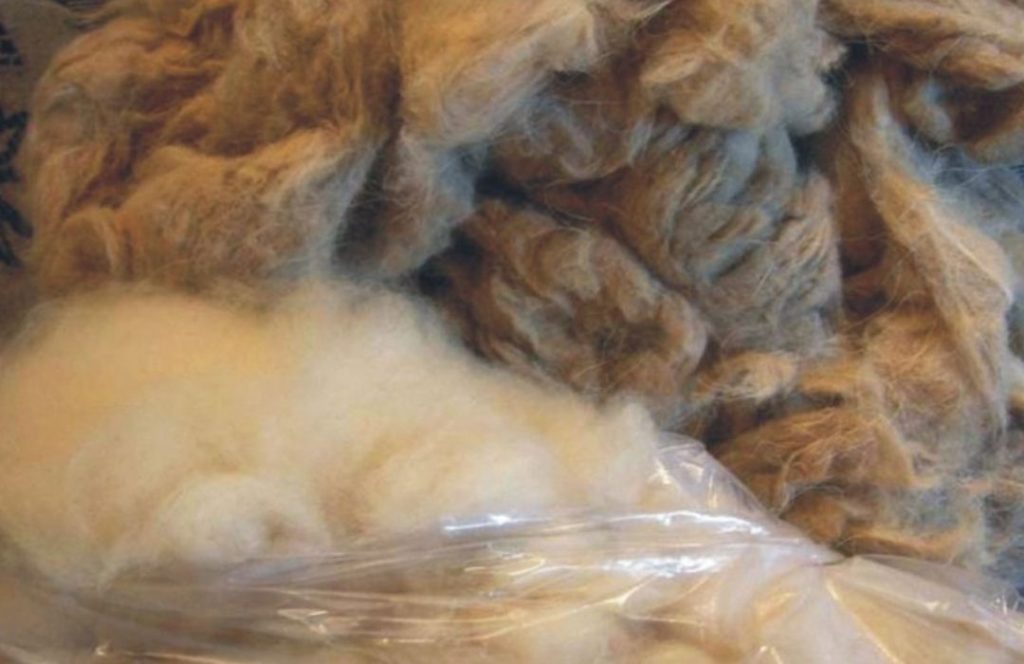
After sorting, artisans thoroughly wash the cashmere fibres to remove dirt, grease, and any residual impurities. This step is crucial in preparing the fibres for further processing and ensuring their cleanliness.
Dehairing the fibres
To separate the cashmere fibres from the coarser outer hair, artisans employ a process called dehairing. They conduct this process using mechanical or chemical methods. To sum up, mechanical dehairing involves passing the fibres through machines that separate the finer cashmere from the coarser fibres based on their diameter and length. On the contrary, chemical dehairing uses a gentle chemical treatment to dissolve the outer hair, leaving behind the soft cashmere fibres.
Carding process
Once the dehairing process is complete, the cashmere fibres are carded. Carding involves combing and aligning the fibres to create a uniform and fluffy mass of cashmere. This step helps in further removing any remaining impurities and aligning the fibres for spinning.
Spinning into fine yarn
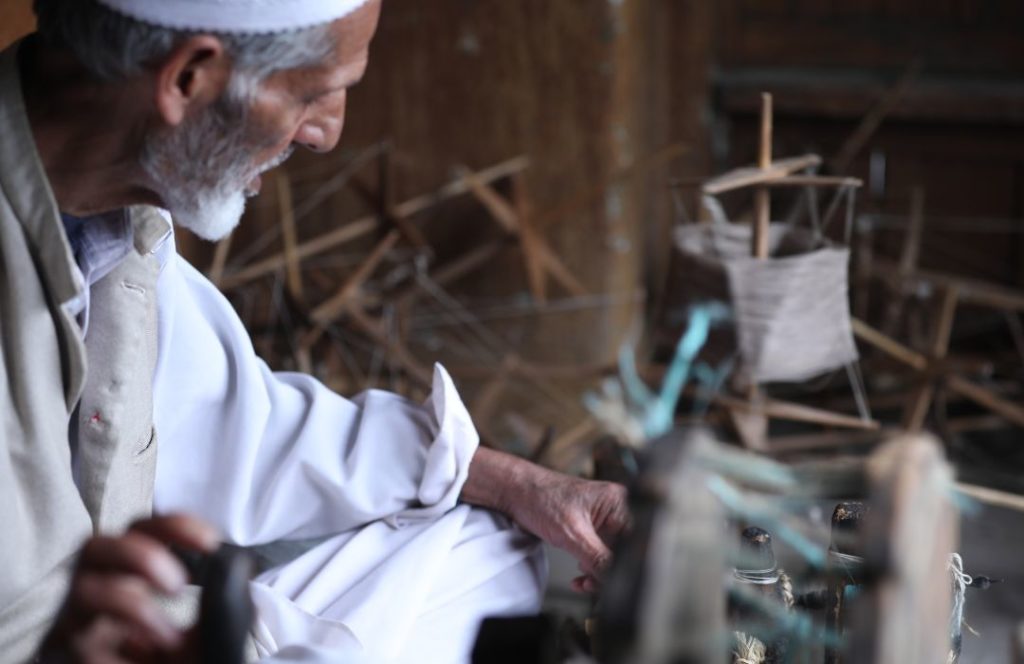
Subsequently, after carding, artisans spin the cashmere fibres into yarn. This process involves twisting the fibres together to create a continuous strand of yarn. The thickness and quality of the yarn are determined during this stage. But this can vary, depending on the desired end product.
Dyeing (Optional) Cashmere Scarves
Professional dyers dye the yarn at this stage if the customer wants them to. Consequently, dyers use natural and synthetic dyes to achieve a wide range of colours. They do this carefully, and hence, preserve the softness and quality of the cashmere.
Weaving and Knitting

The spun and, if necessary, dyed cashmere yarn is then used to weave or knit various products, including cashmere scarves. Traditional hand-weaving techniques are used, depending on the desired outcome.
Quality Control
Throughout the processing and manufacturing stages, quality control measures are implemented to ensure that the cashmere products meet the desired standards for softness, warmth, and overall quality. Any imperfections are corrected to maintain the integrity of the final product.
Finishing Processes
After weaving or knitting, the cashmere products undergo finishing processes, which may include washing, blocking, and pressing to enhance their texture and appearance. This step also helps in removing any remaining impurities and achieving the desired softness.
Packaging and Presentation
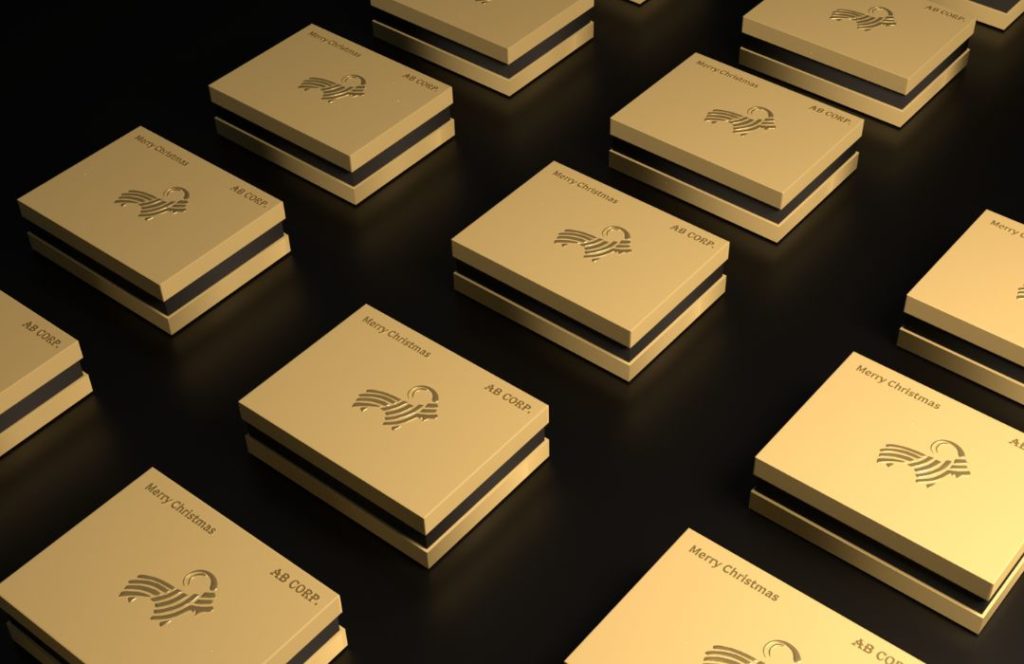
The finished cashmere products are carefully packaged and prepared for distribution. Obviously, high-quality cashmere products come with special packaging and labeling to showcase their premium quality and authenticity.
The processing of cashmere fibre requires precision and expertise at every stage to preserve the remarkable softness and warmth that make cashmere so highly prized. This labour-intensive process ensures that cashmere scarves and other cashmere products retain their luxurious qualities and hence continue to be cherished by those who appreciate their exceptional comfort and elegance.
This is the end of Cashmere processing.
Exceptional Softness of Cashmere Scarves
The exceptional softness of cashmere is one of its defining characteristics. This makes it one of the most sought-after and luxurious natural fibres in the world of fashion and textiles. In fact, Cashmere wool is celebrated for its remarkable tactile qualities and is often described as "luxury against the skin." Several factors contribute to the exceptional softness of cashmere. Some of them are mentioned below:
Fine Fibre Diameter
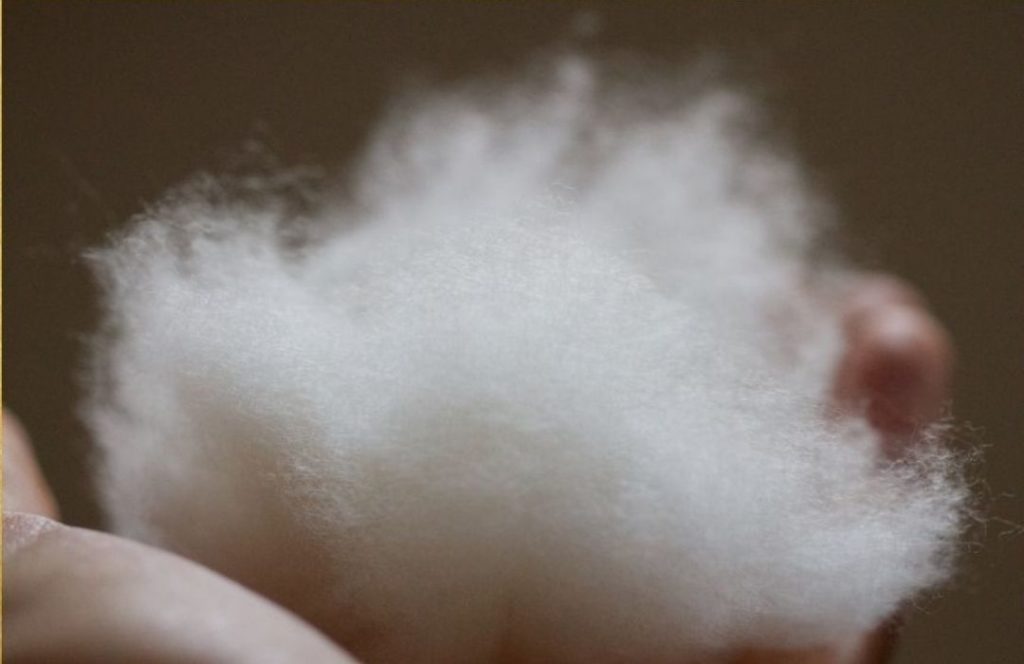
The primary reason for cashmere's softness lies in the diameter of its fibres. Cashmere fibres are extraordinarily fine, measuring between 12 to 15 microns in diameter. In other words, the average human hair has a diameter of about 50 to 70 microns. This fineness gives cashmere its characteristic silky texture, hence making it incredibly soft to the touch.
Natural Origin
Cashmere wool is sourced from the undercoat of cashmere goats, particularly the Cashmere goat. Unlike coarser outer hairs, which protect the goats from harsh elements, the undercoat fibres are exceptionally soft and downy. These fibres have evolved over centuries to provide insulation and warmth in the cold, high-altitude regions where these goats reside.
Unique Crimp Structure
Cashmere fibres have a natural crimp or waviness, and this contributes to their softness. This crimp structure creates tiny air pockets within the fibres, thereby enhancing their insulating properties and creating a plush, cloud-like texture.
Minimal Scaling
The surface of cashmere fibres has minimal scaling compared to other wools, which reduces the potential for itchiness or irritation when in contact with the skin. This lack of scaling also contributes to the smooth and soft feel of cashmere.
Long Staple Length
Cashmere fibres have a relatively long staple length, which refers to the length of individual fibres. Longer staple lengths result in smoother and softer textiles. It is this length of cashmere fibres that allows artisans to spin them into fine and delicate yarns.
Quality Processing
The softness of cashmere is further enhanced through careful processing. After being collected, sorted, and cleaned, the fibres are carefully combed and aligned to create a uniform and fluffy mass of cashmere. This combing process helps remove any remaining impurities. Additionally, it ensures that only the softest fibers enter the final product.
Yarn Spinning
The way spinners spin cashmere fibres into yarn also plays a role in their softness. The fine fibres are spun together gently to preserve their delicate nature, resulting in a soft and lightweight yarn.
High-Quality Finishing
Cashmere products, including scarves and sweaters, undergo finishing processes to enhance their texture and softness. These processes can include washing, blocking, and pressing to ensure the final product is as soft and luxurious as possible.
The combination of these factors results in cashmere's exceptional softness. The finesse of Cashmere does not only receive appreciation for its tactile comfort but also for the feeling of indulgence and luxury it imparts to those who wear it
Incredible Warmth of Cashmere scarves
Despite its lightweight and delicate feel, cashmere is remarkably warm. Fine fibres have the unique property of trapping heat efficiently, providing exceptional insulation. This means that cashmere scarves are not only soft against the skin but also incredibly warm, making them ideal for chilly weather.
Versatility in Style, Timeless, Elegant Cashmere Scarves
Cashmere scarves are highly versatile fashion accessories. Hence, they come in various sizes, from oversized wraps to lightweight and cozy scarves. This versatility allows wearers to style them in numerous ways. Whether draped casually over the shoulders, knotted stylishly around the neck, or worn as a shawl, cashmere scarves effortlessly enhance any outfit.
Cashmere scarves exude an air of elegance and timelessness. Their subtle sheen, combined with their softness, adds a touch of sophistication to both casual and formal attire. They are equally graceful at home when one pairs them with a simple sweater or wears them as an accessory with an elegant evening gown.
A Range of Colours and Patterns
Cashmere scarves come in a wide range of colours and patterns, from classic solids to intricate embroideries. This diversity allows individuals to express their style and personality while enjoying the luxurious feel of cashmere.
Durability and Longevity of Cashmere Scarves
High-quality cashmere scarves are not only luxurious but also durable. When cared for properly, they can last for many years, making them an investment piece in one's wardrobe. Proper care includes gentle hand washing or dry cleaning and storing them in a cool, dry place.
Cultural Significance of Cashmere
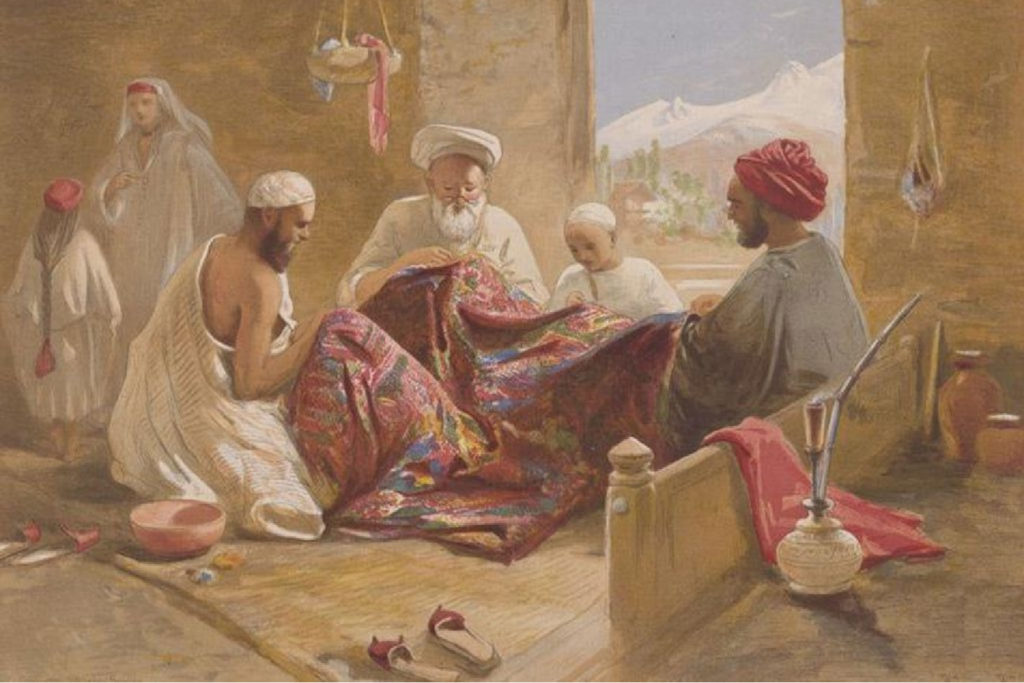
Cashmere wool has been famous for centuries in regions like Kashmir, Mongolia, and Nepal, where the finest cashmere comes from. The art of working with cashmere has passed down through generations, and the craftsmanship involved in creating cashmere scarves is an essential part of these cultures.
Responsible and Sustainable Sourcing
Responsible and sustainable sourcing of cashmere is becoming increasingly important in the fashion industry. This premium natural fibre comes from the undercoat of cashmere goats, primarily found in regions like Mongolia, China, and Inner Mongolia. Here are key considerations for responsible cashmere sourcing
Animal Welfare
Ethical cashmere production prioritizes the well-being of cashmere goats. Sustainable practices guarantee that the goats are raised in humane conditions, and provided with adequate food, shelter, and veterinary care.
Environmental Impact
Sustainable cashmere sourcing aims to minimize the environmental impact of grazing and herding practices. Strategies include rotational grazing to prevent overgrazing and land degradation and reforestation initiatives to combat desertification.
Quality Over Quantity
Responsible sourcing focuses on quality over quantity. It promotes the selection of fine, soft fibres while discouraging practices that prioritize higher yields of coarser cashmere.
Community Empowerment
Supporting local communities involved in cashmere production is vital. Fair wages, safe working conditions, and equitable trade practices contribute to community empowerment and economic stability.
Conservation Efforts
Conservation initiatives protect fragile ecosystems where cashmere goats roam. This involves preserving biodiversity, managing water resources, and mitigating the impact of climate change.
Certification Standards
Various certification standards, such as the Sustainable Fibre Alliance (SFA) and the Good Cashmere Standard (GCS), are emerging to ensure transparency and ethical practices throughout the cashmere supply chain.
Are Cashmere scarves good?
Cashmere scarves are not just good; they are exceptional fashion accessories popular for their unparalleled quality, softness, warmth, and timeless elegance. These luxurious scarves are crafted from one of the world's most coveted natural fibres, cashmere wool. These have been popular for centuries for several compelling reasons.
The unrivaled Softness of Cashmere scarves
One of the primary reasons cashmere scarves are highly famous is their exceptional softness. Cashmere fibers are incredibly fine, with a diameter measuring between 15 to 19 microns. This remarkable fineness gives cashmere its silky, cloud-like texture, making it one of the softest natural fibres in existence. When wrapped around the neck or draped over the shoulders, a cashmere scarf provides a gentle, comforting touch against the skin.
Exceptional Warmth of Cashmere scarves
Despite their lightweight and delicate feel, cashmere scarves are exceptionally warm. The fine fibers have a unique insulating property, trapping heat efficiently and providing superior warmth compared to many other materials. Whether you're facing a chilly winter's day or a cool evening breeze, a cashmere scarf is a reliable companion for staying snug and comfortable.
Versatile Styles in Cashmere scarves
Cashmere scarves are incredibly versatile in terms of style. They come in various sizes, ranging from oversized wraps to lightweight and cozy scarves. This versatility allows wearers to experiment with different draping styles and adapt their cashmere scarf to various outfits and occasions. Whether worn casually with jeans and a sweater or elegantly with formal attire, a cashmere scarf effortlessly enhances any look.
Timeless Elegance of Cashmere Scarves
Cashmere scarves exude an air of timeless elegance. Their subtle sheen and luxurious feel add a touch of sophistication to both casual and formal ensembles. Whether you're attending a special event or simply running errands, a cashmere scarf elevates your appearance and lends an aura of refinement.
A Range of Colours and Patterns
Cashmere scarves come in a wide range of colours and patterns, allowing individuals to express their style and personality. From classic solid colours to intricate patterns and plaids, there's a cashmere scarf to suit every taste and outfit. This diversity in design ensures that there's a perfect cashmere scarf for any occasion.
Durability and Longevity of Cashmere Scarves
High-quality cashmere scarves are not just fashionable; they're also durable. When cared for properly, they can last for many years, making them an investment piece in your wardrobe. Proper care includes gentle hand washing or dry cleaning and storing them in a cool, dry place.
Cultural and Historical Significance of Cashmere Scarves
Cashmere wool has a rich history, originating from the undercoat of cashmere goats, particularly those found in regions like Mongolia, China, and Inner Mongolia. The art of working with cashmere has been passed down through generations in these regions, and the craftsmanship involved in creating cashmere scarves is an essential part of their cultural heritage.
Responsible and Sustainable Sourcing of Cashmere
Increasingly, there is a focus on responsible and sustainable sourcing of cashmere wool. Ethical practices ensure the well-being of cashmere goats, minimize environmental impact and support local communities involved in its production. This commitment to sustainability aligns with the values of conscientious consumers.
Conclusion
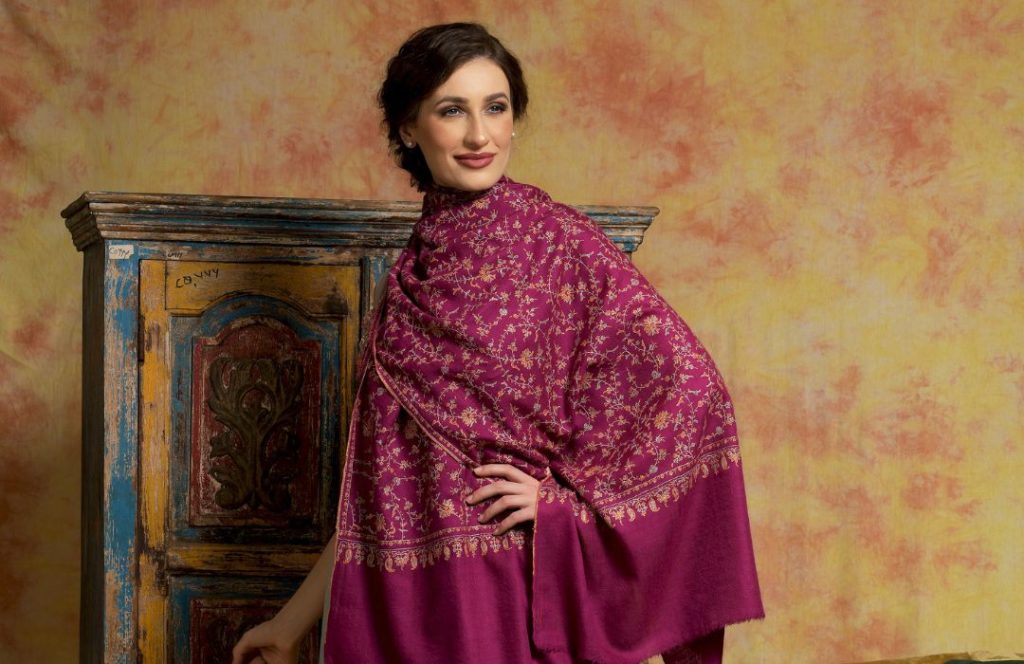
In a world increasingly focused on sustainability and ethical practices, responsible sourcing of cashmere ensures that these scarves not only feel good but also do good. Ethical practices prioritize the well-being of cashmere goats, minimize environmental impact, and support local communities.
So, if you're ever in doubt about whether to invest in a cashmere scarf, rest assured that it is more than a fashion accessory; it's a piece of luxury, craftsmanship, and comfort that stands the test of time. A cashmere scarf is not just "good"; it's a true classic that elevates your style and embraces you in a warm embrace, making it an indispensable part of your wardrobe.
Also read: IS CASHMERE BETTER THAN SILK?